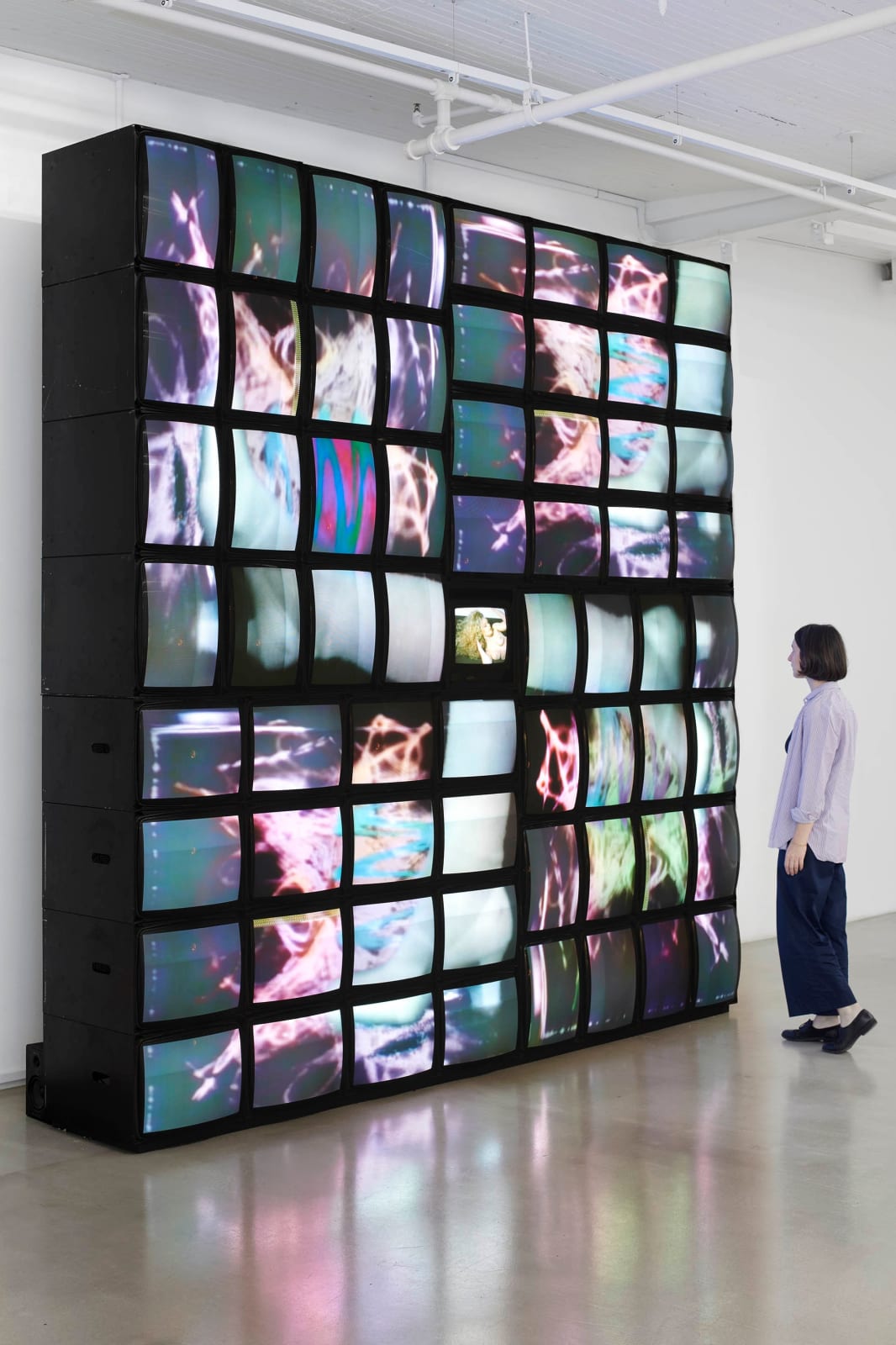-
Artworks





Main Channel Matrix, 1993-1996
2 video channels with audio, 1 matrix computer, 65 monitors28 min. loop
131 7/8 x 131 7/8 x 26 in.
335.0 x 335.0 x 66.0 cm$ 1,600,000.00Further images
'Main Channel Matrix', 1993-1996 is a monumental videowall composed of 65 television sets that play Paik’s seminal 1973 video broadcast 'Global Groove' on continuous, splicing loop. With this work, Paik..."Main Channel Matrix", 1993-1996 is a monumental videowall composed of 65 television sets that play Paik’s seminal 1973 video broadcast "Global Groove" on continuous, splicing loop. With this work, Paik combined compositional design and video imagery to create a radical manifesto on the nature of global communication in a media saturated world. The notion of using multiple television monitors stacked within a structural framework to display information has long been a trade show marketing tool. Paik reimagined the commercial videowall for electric, expressive purpose, deploying a pastiche of sound and image to create a moving mural, composed of hundreds of discrete images, that subverted the standard language of television. Japanese Pepsi commercials are intercut with performances by avant-garde artists Merce Cunningham, John Cage, Allen Ginsberg and the Living Theater; dancers shimmying in a colorized space to Mitch Ryder’s "Devil with a Blue Dress On" are juxtaposed with traditional Korean dancers. A wildly synthesized Charlotte Moorman, Paik’s longtime collaborator, plays the TV Cello; together they play the TV Bra for Living Sculpture. Richard Nixon’s face, magnetically distorted, appears and disappears. In his “Participation TV” Paik instructs viewers to open and close their eyes. Paik brings together these transcultural elements, Pop iconography, and artworld figures to create a dizzying postmodern spectacle, a chimerical “glimpse into the video landscape of tomorrow, when you will be able to switch to any TV station on the earth, and TV Guide will be as fat as the Manhattan telephone book.”
Installation Video: https://vimeo.com/421213503Provenance
Private Collection
Exhibitions
ART BASEL, 1997
MAMCO, Musee d’Art Moderne et Contemporain, 1999
Guggenheim Museum, New York, USA, February 11 - April 26, 2000
Musée d’Art Contemporain Lyon, Lyon, France, 2001
Guggenheim Bilbao, Spain, May 22, 2001 – September 30, 2001
Magasin, Centre d’Art Contemporain, Grenoble, France, June 14 - September 3, 2006
El Instante Fundacion, Madrid, Spain, February 14 - April 9, 2018
Music is Not Sound, James Cohan, New York, NY, 2019










